I have difficulties wrapping my head around the concept.
I am trying to implement an endpoint that listens on a tcp port for incoming messages in a proprietary format, which would then transform the message and have camel take over the forwarding and routing.
Did I understand correctly that that the Producer is responsible for sending messages into the Endpoint and the Consumer receives them from that endpoint?
When studying the interfaces I couldn't figure out the message flow between those objects, especially on the consumer part. Consumer only defines start() and stop() methods...
When setting up a test on a skeleton implementation, Camel invoked createProducer() on the endpoint and process() on the producer object. After that it returned, swithout doing anything with the consumer or the processor associated with it.
Could someone point me in the right direction?
